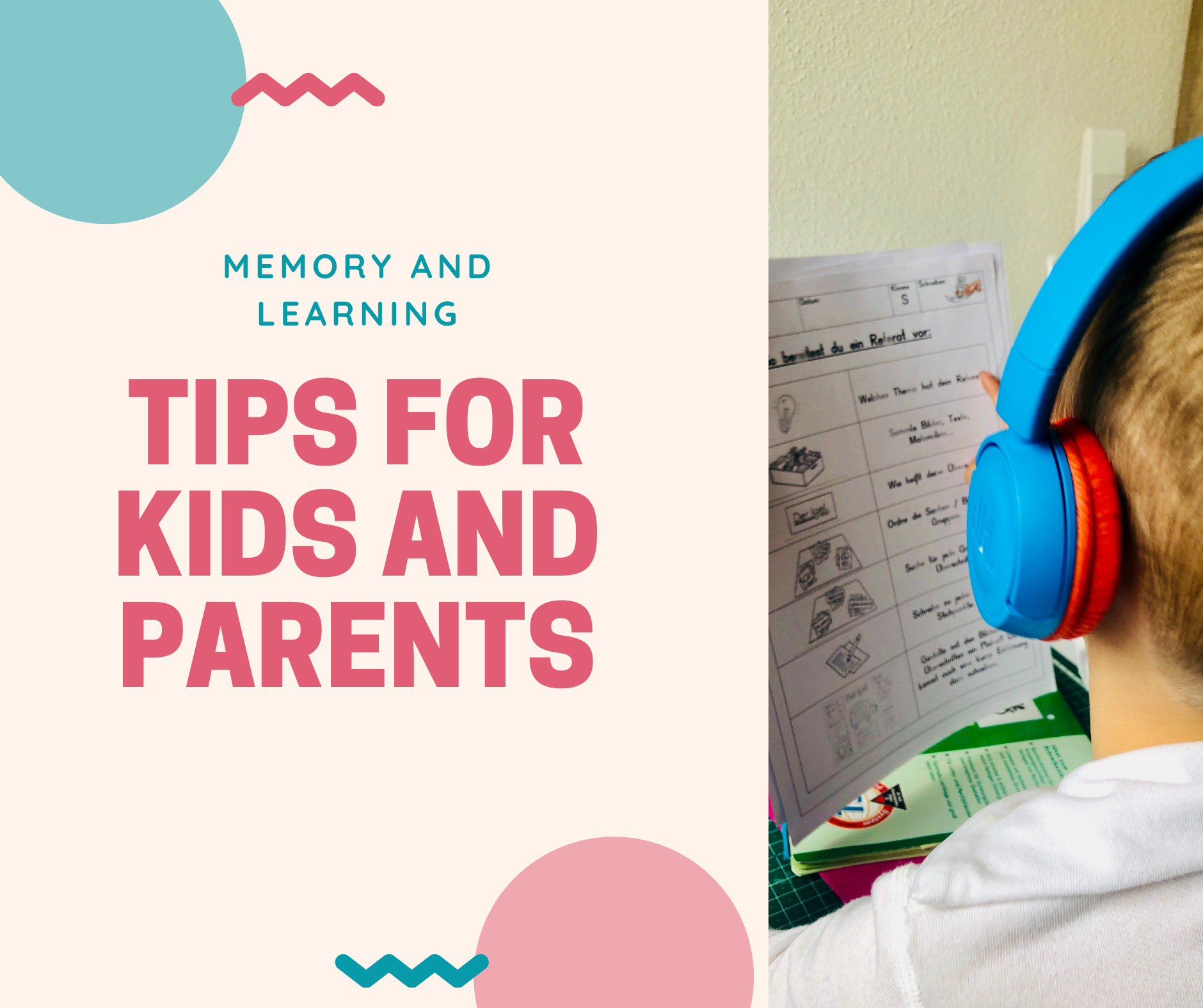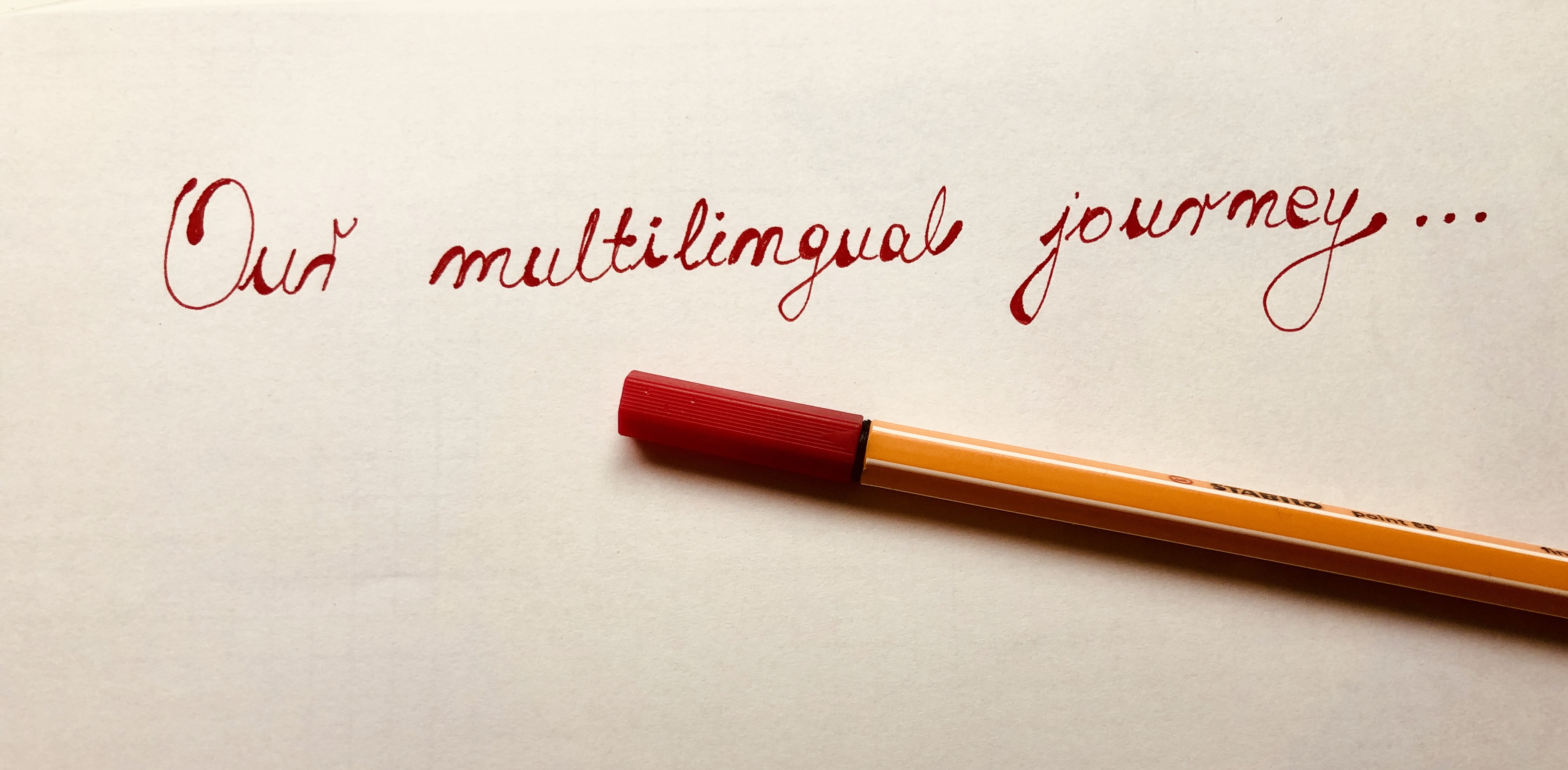Projects for younger children

Even though projects help children gain knowledge and skills by working for an extended period of time to investigate and respond to a question, problem, or challenge (which all sounds a bit complex), young children can do some projects as well. Simple and easy.
Here is a list of some projects we did with our boys when they were 1 – 3 years old.
Below, you can find some ideas and tips on how to prepare children for project work.
In this article read more about:
Project ideas
Family
When you live more than 800 km away from your grandparents, aunts and uncles, photographs that are always at the display can be a nice reminder. And when you are one year old, you can find some photos, (try to) cut and glue them, exhibit and talk with your parents about family. At this age, the most common question is “that” meaning “who/what is that”. The more photos you put on the wall, the more “that” you can answer.
Materials: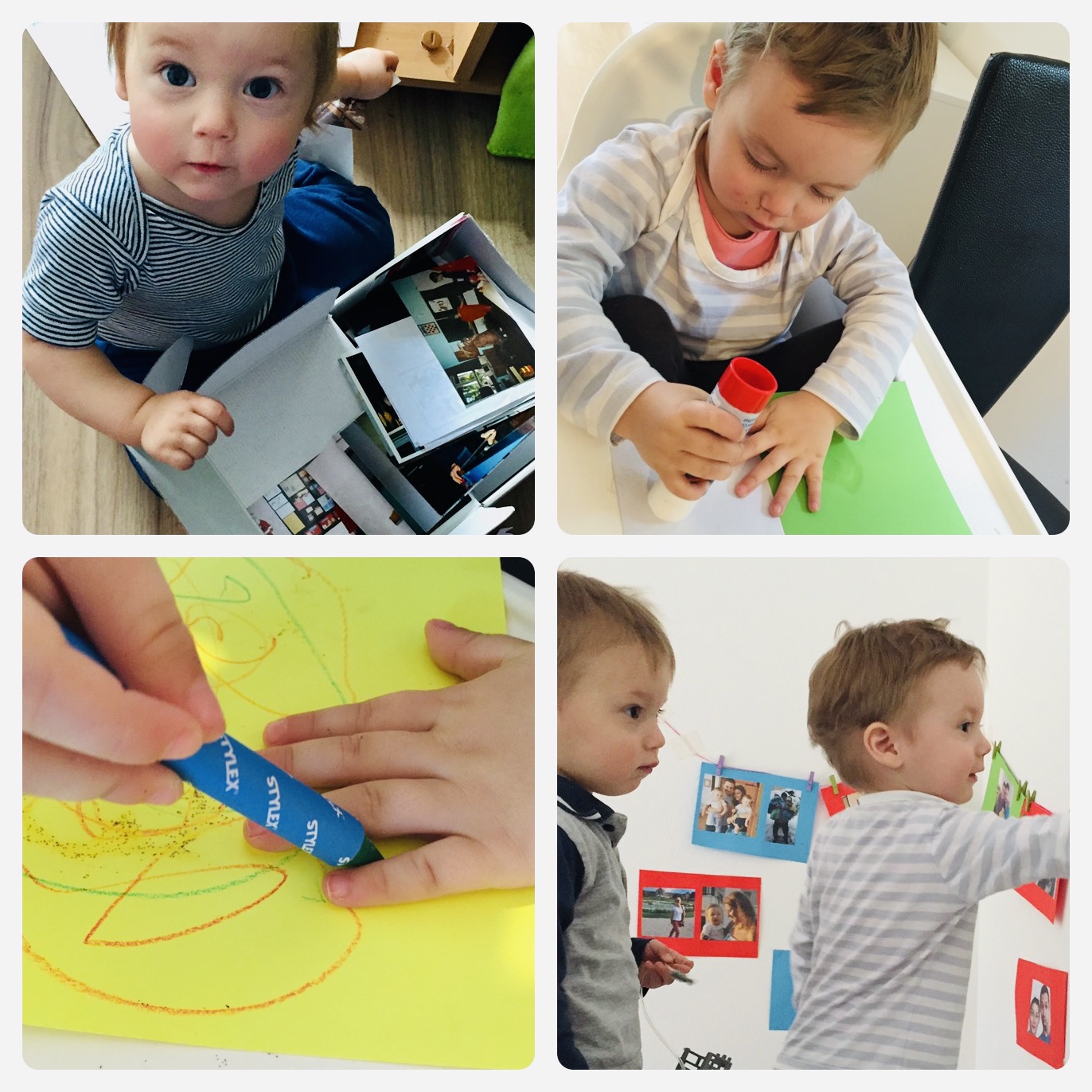
- family photographs
- thread
- glue
- coloured paper
- scissors
- clothes pegs
Instructions:
1. Talk to your child about the project - what you are going to make, why and how. We decided to make a simple photo exhibition in their room.
2. Collect the photos you want to exhibit. This can be a task your kid. Don't forget to talk about the people in the photographs.
3. Cut out pieces of paper on which you plan to glue the photos. They should be slightly bigger than the pictures. Our boys were around 15 months old when we did this one, so I cut the papers.
4. Glue the photos on the paper. Again, something a very young child can do with your help.
5. Cut a piece of thread and hang the photos using clothes pegs. This can be a bit clumsy for little fingers, but it is an excellent exercise for fine-motor skills.
6. Display and talk.
Autumn
Collecting leaves, glueing, drawing, exhibiting is what a kid under the age of two can do well. It includes some planning, establishing objectives, and a defined endpoint. Sounds like a project, doesn't it?
Materials:
- leaves
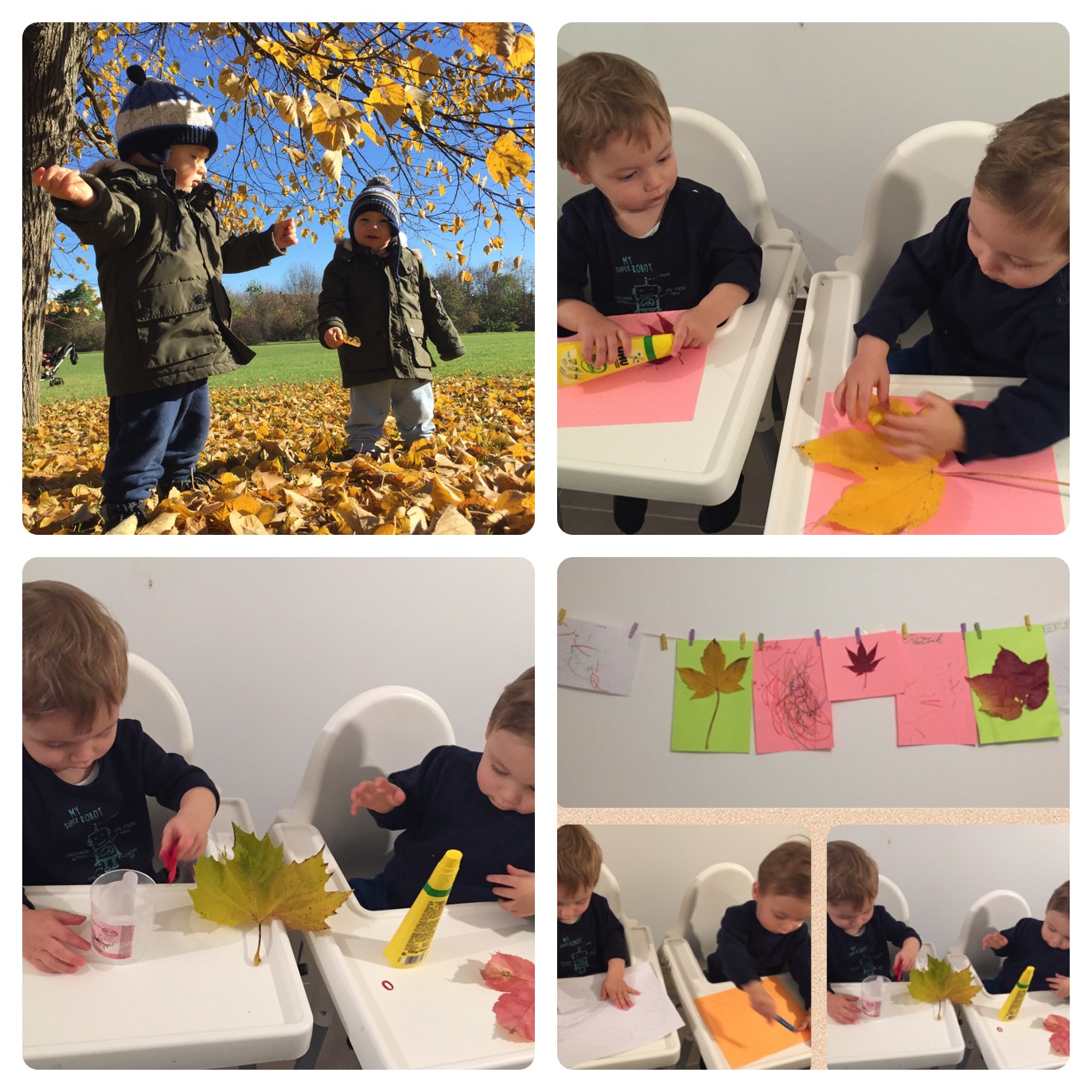
- Coloured paper
- thread
- glue
- clothes pegs
Instructions:
- Talk about the season and how leaves fall. Set an aim for the project - leaves exhibition.
- Go outside and collect different leaves. You get to spend some quality time together and enjoy the autumn.
- Half the coloured paper and glue the leaves. For this one, I cut the paper because Einstein E and Power P were around two years old and needed more practice with the scissors. But, they glued the leaves on the papers.
- Hang the papers on a string using clothes pegs. Again, an excellent exercise for those little fingers.
Hickory Dickory dock
Like all nursery rhymes, Hickory Dickory Dock fosters phonemic awareness and language acquisition. And in our case, some multilingual elements. But most importantly, it is fun :)
Materials:
- paper rolls
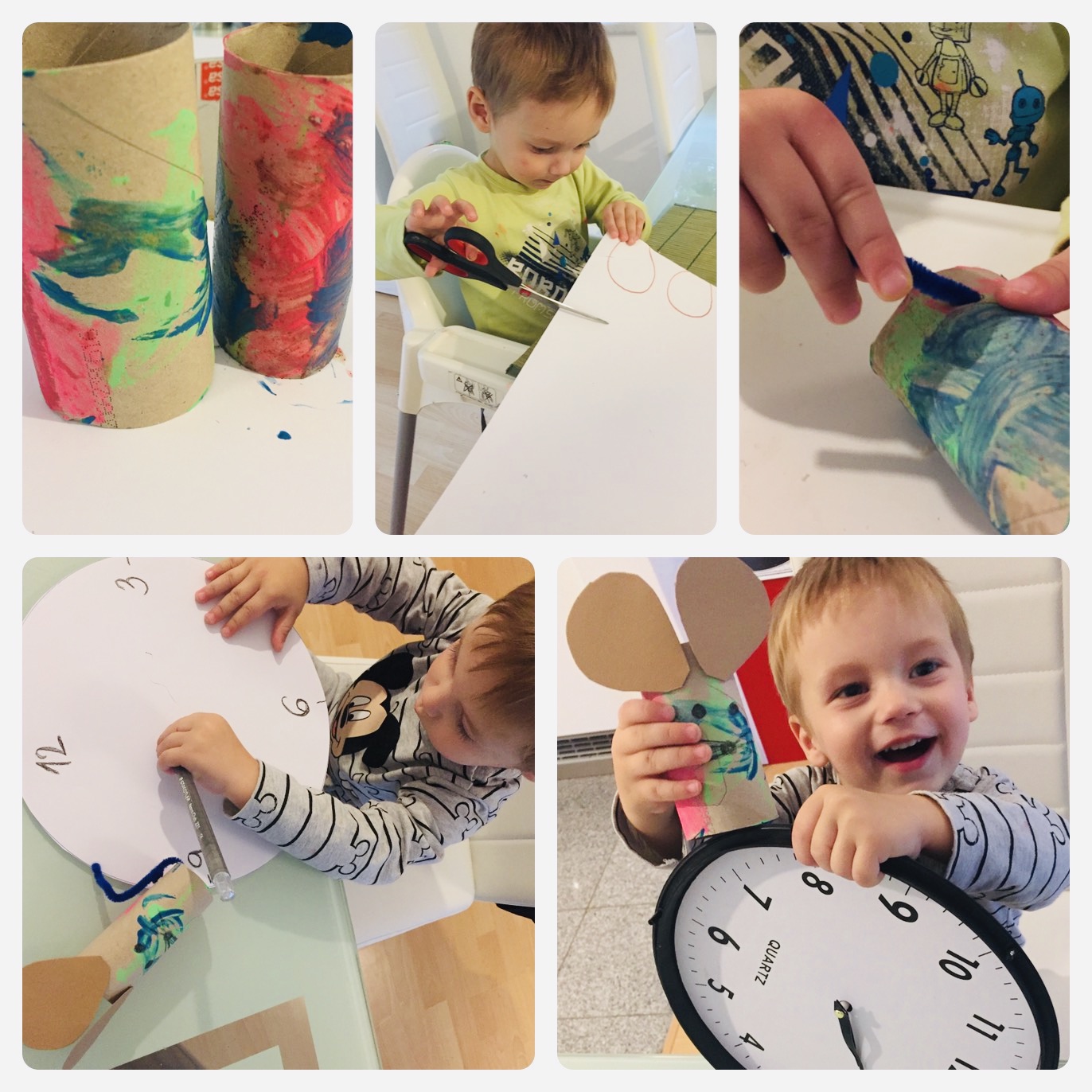
- paint (we used watercolour)
- paintbrushes
- pipe cleaners for the tail
- paper for the ears
- an old clock or make a paper clock
Instructions:
- Let the kid paint the toilet paper rolls you prepared. If they are really young, it most likely not be perfect, but it is their work.
- Cut out two circles to make the ears. Or let the kid do it.
- Glue the ears on the paper roll.
- Make a hole for the pipe cleaner - the tail.
- Let the kid pull the tail through the hole.
- Draw a nose and whiskers.
Then you can sing and play.
Hickory Dickory dock.
The mouse went up the clock.
The clock struck one.
The mouse went down
Hickory Dickory Dock
Tick tock, tick tock, tick tock, tick tock
Necklace
The boys were three years old when their little friend was born. We decided to make a gift for her mum – a necklace.
Materials: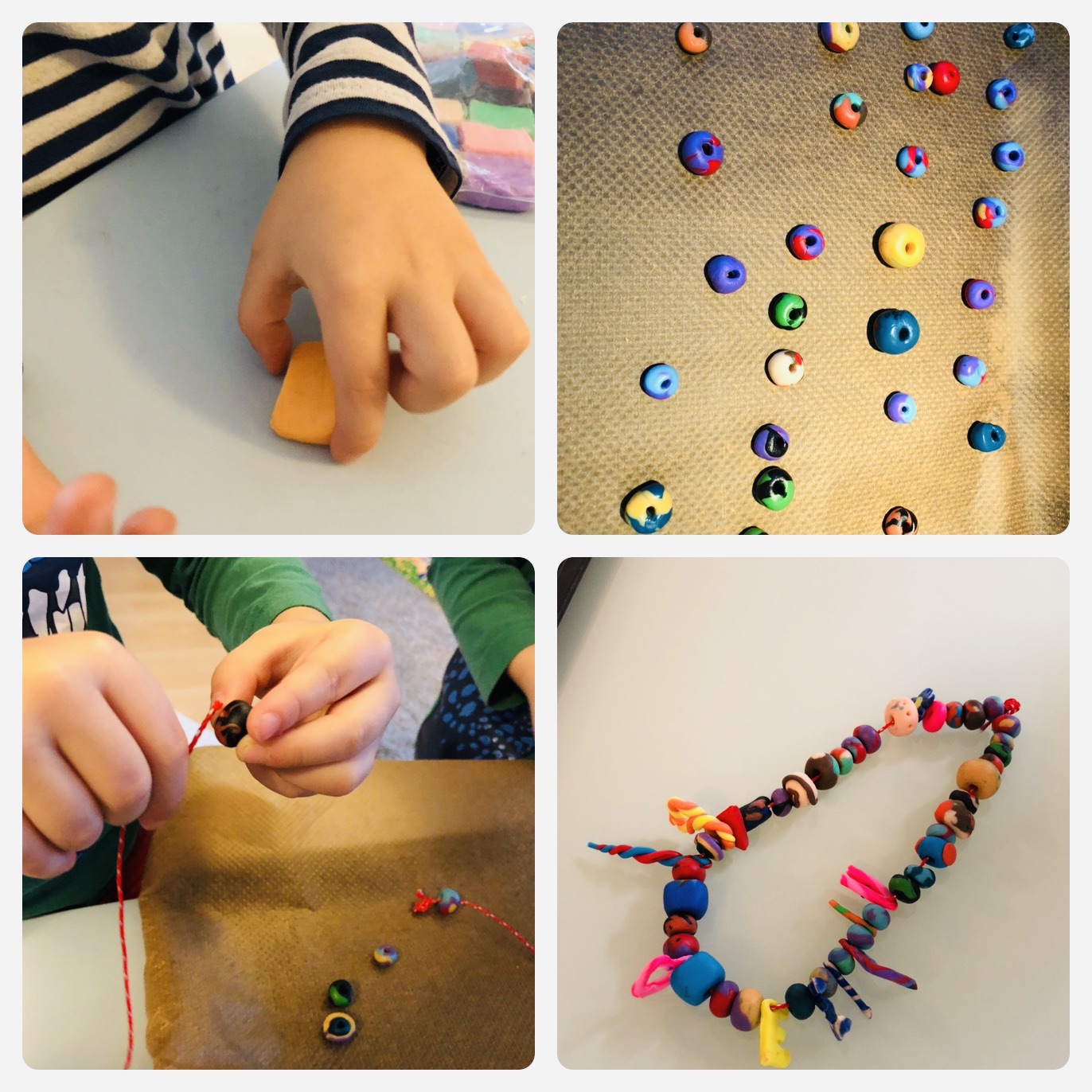
- FIMO
- a craft knife (we had a wooden one)
- string
Instructions:
1) Cut little pieces of FIMO. Young kids can do it using a wooden craft knife.
2) Make small pearls or some other shapes.
3) Make a hole in each little pearl.
4) Put in the oven (for a maximum of 30 minutes at a temperature of 110°C, or just follow instructions on the package).
5) When the pearls cool down, put them on a thread and voilà.
This was a challenging task for those chubby little fingers, but they made it.
Think - aloud method
Nowadays, project work starts even in kindergartens. Let's define it as a piece of work which has a clear goal, requirements, schedule, needs to be monitored, has a start and an end. You might wonder how children, especially small children, can do projects. They can't even blow their nose properly! Well, they can do it with their parents, of course. It is our role to feed in the idea, and they will use the knowledge acquired when they are ready.
Think - aloud is a good approach. As its name suggests, thinking aloud during problem-solving means that the parent keeps on talking, speaks out loud whatever thoughts come to mind, while performing the task at hand.
Let's take the first project listed here as an example.
Child: da-da-da-da
Mother: yes, let's make a family tree. Ok, this might be a bit too much to start with. How about just hanging the photographs on the wall? We could do that. It's going to be like a photo exhibition (goal). So, what's the first step? (Asks the child but answers herself). Yes, we need some photographs. That can be our first step. And afterwards? We need some glue, coloured paper, scissors and some kind of thread or wool or something like that (requirements). Let's check if we have all that. Ok, it seems like we don't have any glue. We have to go shopping. We need some money.
Child: da-da-da ga-ga
Mother: Ok, your task is to choose some photos, and we can ask daddy to get a glue stick (identifying tasks). I can help you with the photos.
Child: da-da-ba
And so on.
Think- alouds are also an excellent approach for language development, reading and speaking skills. And it is never too early or too late to start. Talking aloud about what you`re thinking shows them how to monitor their own thinking which is of great help once they start school. Before they start school, they are still in the pre-operational stage, which means that their thinking is based on intuition and still not entirely logical. They cannot yet grasp entirely more complex concepts such as cause and effect, and time. So, don't expect them to start planning their projects just yet. But look at this the same way we go with reading. Just because most children start reading when they are around six, it doesn't mean that we shouldn't start reading to them when they are still babies.
